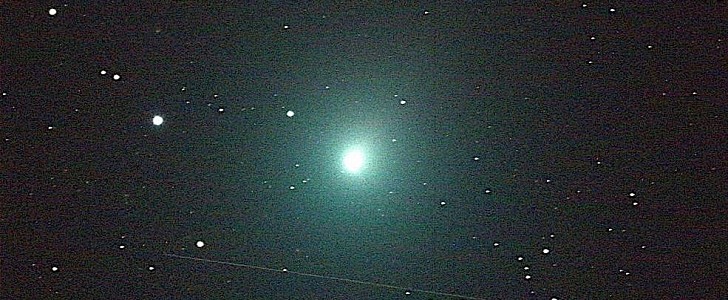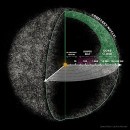“One of the highest alcohol-to-aldehyde ratios measured in any comet to date”—that’s how scientists describe their findings on the comet 46P/Wirtanen that zipped past Earth two years ago, leaving in its wake an unusual amount of alcohol. But wait, are alcohol and comets a thing?
Apparently, yes. The last time we Earthlings became aware of this was in 2015 when a comet called Lovejoy was found to be releasing ethyl alcohol, the same kind you’d find in Earth-made alcoholic beverages. Lovejoy also spat out sugar, making it one party-ready comet.
In the case of Wirtanen, we are not given any info on what type of alcohol was found, or how large the quantity, but NASA calls the levels “abnormally high,” citing research using data from the W. M. Keck Observatory on Maunakea in Hawaii.
The substance was released by the comet, just like all other substances are released. As it comes closer to the Sun, it heats up, and some of its component parts sublimate and are released as outgassing.
Alongside alcohol, the research team that looked at Wirtanen also found the thing to be releasing acetylene, ammonia, formaldehyde, hydrogen cyanide, and water. Not quite the party-ready comet, this one, but a valuable tool for scientists, as the alcohol and other substances they found could give information on “how carbon, oxygen, and hydrogen molecules were distributed in the early solar system where Wirtanen formed.”
46P/Wirtanen is a piece of space rock with an orbital period of almost five and a half years. Humans targeted it with the Rosetta mission, but that ended up going for 67P/Churyumov–Gerasimenko, where it didn’t find much.
We bet ESA, who ran Rosetta, now wishes it would have gone for this other comet instead, which in 2018 passed 7.1 million miles (11.4 million km) from Earth or about 30 times the distance to the Moon.
You can find the full results of the study into this comet at this link.
In the case of Wirtanen, we are not given any info on what type of alcohol was found, or how large the quantity, but NASA calls the levels “abnormally high,” citing research using data from the W. M. Keck Observatory on Maunakea in Hawaii.
The substance was released by the comet, just like all other substances are released. As it comes closer to the Sun, it heats up, and some of its component parts sublimate and are released as outgassing.
Alongside alcohol, the research team that looked at Wirtanen also found the thing to be releasing acetylene, ammonia, formaldehyde, hydrogen cyanide, and water. Not quite the party-ready comet, this one, but a valuable tool for scientists, as the alcohol and other substances they found could give information on “how carbon, oxygen, and hydrogen molecules were distributed in the early solar system where Wirtanen formed.”
46P/Wirtanen is a piece of space rock with an orbital period of almost five and a half years. Humans targeted it with the Rosetta mission, but that ended up going for 67P/Churyumov–Gerasimenko, where it didn’t find much.
We bet ESA, who ran Rosetta, now wishes it would have gone for this other comet instead, which in 2018 passed 7.1 million miles (11.4 million km) from Earth or about 30 times the distance to the Moon.
You can find the full results of the study into this comet at this link.







